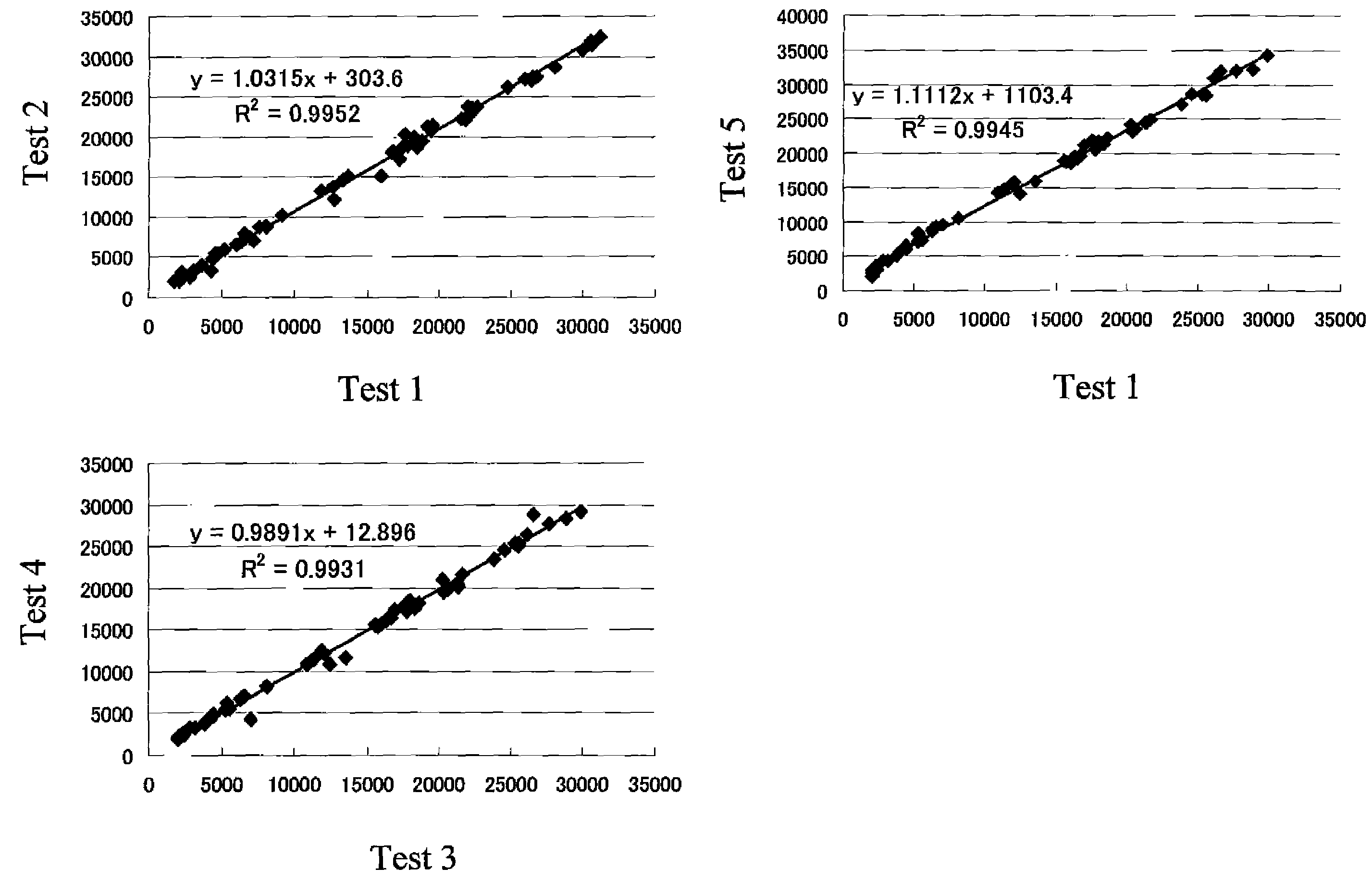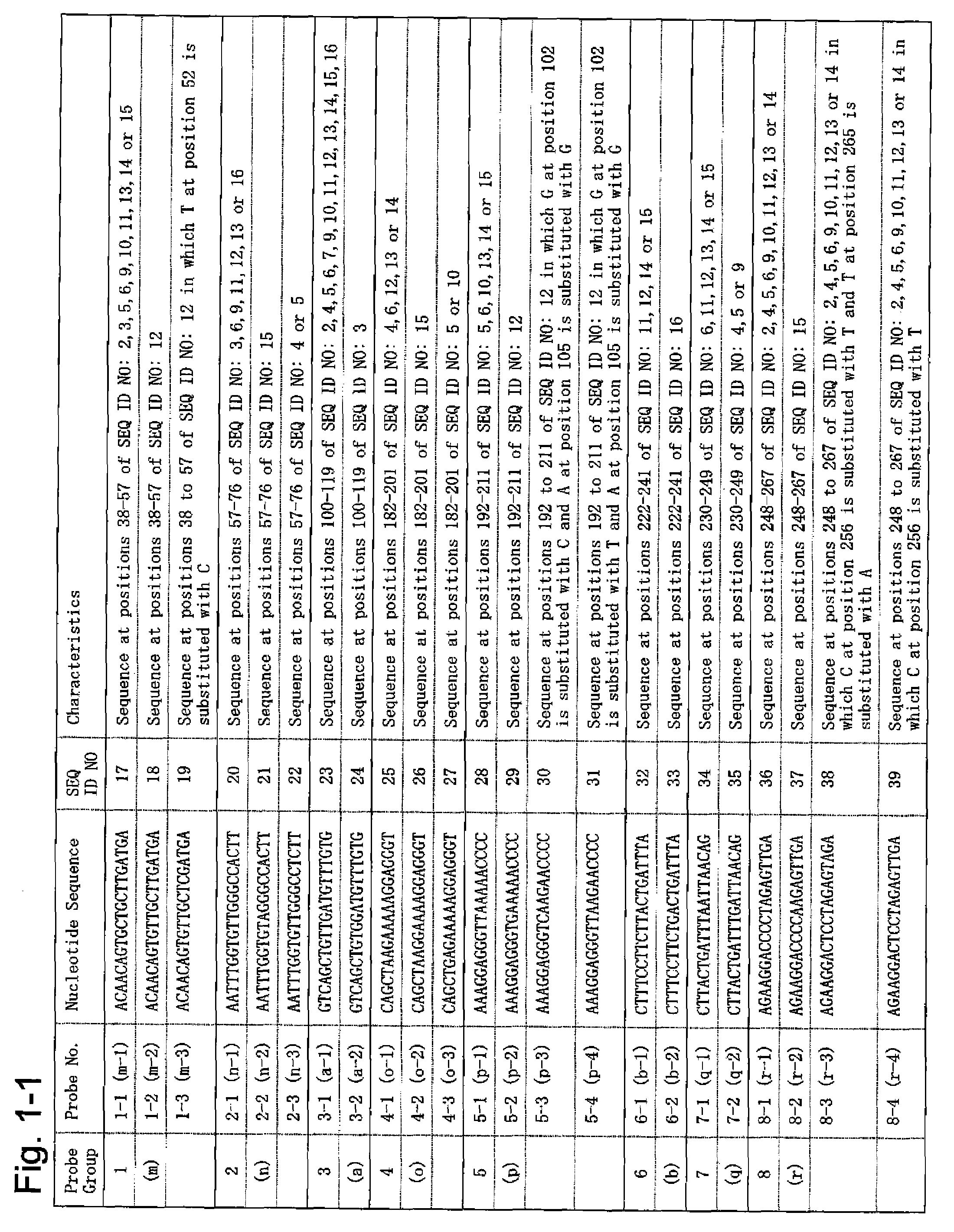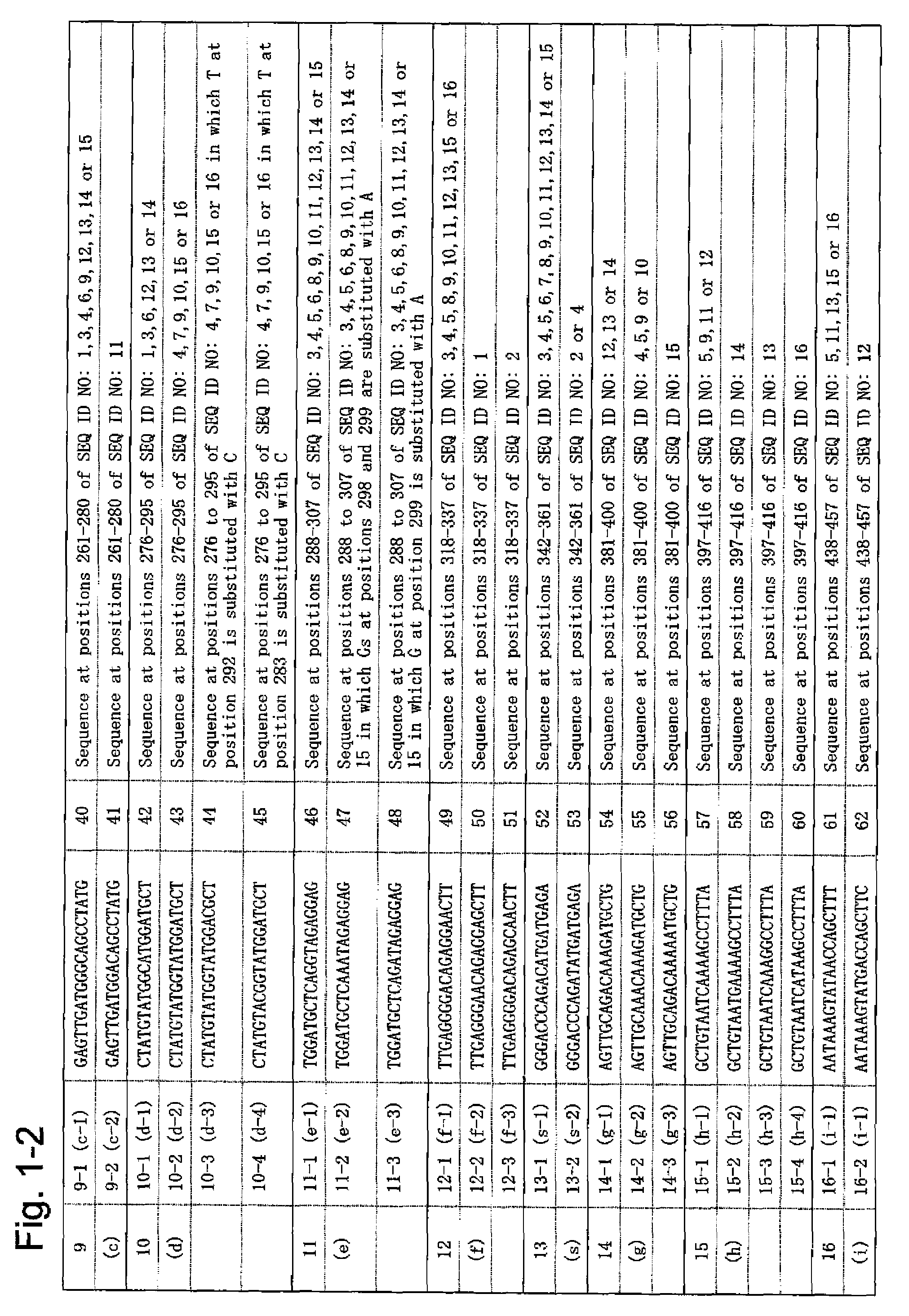Oligonucleotide probes and microarray for determining genome types
a technology applied in the field of oligonucleotide probes and microarrays, can solve the problems of time-consuming, professional analytical skills, inability to completely remove jcv in vivo by immunological reaction, etc., and achieve the effect of quick and convenient determination
- Summary
- Abstract
- Description
- Claims
- Application Information
AI Technical Summary
Benefits of technology
Problems solved by technology
Method used
Image
Examples
example 1
Preparation of a Carrier
[0095]A double DLC layers were formed on a 3-mm square silicon substrate by ionized evaporation under the following conditions.
TABLE 2FirstSecondlayerlayerRaw material gasCH44.7547.5(sscm)H20.252.5(sscm)Working pressure3.08.0(Pa)Substrate biasDC voltage500500(V)High-frequency output100—(W)Anode voltage5050(V)FilamentVoltage77(V)Current2222(A)
[0096]An amino group was introduced into the obtained silicon substrate having a DLC layer on the surface thereof with the use of ammonia plasma under the following conditions.
TABLE 3Raw material gasNH330(sscm)Working pressure8.0(sscm)Substrate biasDC voltage500(Pa)High-frequency output—(W)Anode voltage50(V)FilamentVoltage7(V)Current22(A)
[0097]The silicon substrate was immersed in a 1-methyl-2-pyrrolidone solution containing 140 mM succinic anhydride and 0.1 M sodium borate for 30 minutes for introduction of a carboxyl group. Then, the silicon substrate was immersed in a solution containing 0.1 M potassium phosphate buffe...
example 2
Preparation of a Microarray
[0098]Based on the nucleotide sequences (SEQ ID NO: 1 to 16) of 16 different JC virus genome types, 54 types of oligonucleotide probes were synthesized, such probes each comprising 20 nucleotides and having the 5′ end modified with an amino group. FIG. 1 shows the sequences of the individual oligonucleotide probes (hereinafter referred to as probes). In FIG. 1, for each probe, the corresponding oligonucleotide probe group and the oligonucleotide probe of the present invention are described in brackets.
[0099]The 54 types of probes shown in FIG. 1 were dissolved in a spotting solution (Sol.6) at 10 pmol / μl and the obtained solution was spotted on the carrier prepared in Example 1 with the use of SPBIO (Hitachi Software Engineering Co., Ltd.). Baking was carried out at 80° C. for 1 hour, followed by washing with a 2×SSC / 0.2% SDS solution (room temperature) for 15 minutes and further washing with a 2×SSC / 0.2% SDS solution (95° C.) for 5 minutes. Then, rinsing ...
example 3
Analysis of Signals Characteristic to JC Virus Genome Types
[0100]The microarray prepared in Example 2 was used for detection of a sample derived from a test subject with an identified JC virus genome type (EU, Af1, Af2, SC, CY, MY, B1-a, B1-b, B1-c, B1-d, or B2) (such sample being obtained by PCR amplification of the IG region with the use of DNA extracted from urine as a template and cloning of the amplified product in a plasmid vector).
[0101]DNA was extracted form the sample with the use of QiaAmp DNA (QIAGEN). A PCR reaction solution was prepared using the DNA as a template DNA in accordance with the following composition.
TABLE 4Preparation of a PCR reaction solution (20.6 μL)Primer 1 (10 μM)1μLPrimer 2 (10 μM)1μLPCR buffer2μLdNTP (dCTP: 1 / 10 concentration)2μLCy5-dCTP (Amersham Bio)0.5μLTemplate DNA1μLEx Taq DNA polymerase (TAKARA Bio)0.1μLH2O13μL
[0102]The sequences of the primers used were as follows.
(SEQ ID NO: 71)Primer 1:5′-CACAAGCTTTTTTGGACACTAACAGGAGG-3′(SEQ ID NO: 72)Prime...
PUM
| Property | Measurement | Unit |
|---|---|---|
| Equivalent mass | aaaaa | aaaaa |
Abstract
Description
Claims
Application Information
 Login to View More
Login to View More - R&D
- Intellectual Property
- Life Sciences
- Materials
- Tech Scout
- Unparalleled Data Quality
- Higher Quality Content
- 60% Fewer Hallucinations
Browse by: Latest US Patents, China's latest patents, Technical Efficacy Thesaurus, Application Domain, Technology Topic, Popular Technical Reports.
© 2025 PatSnap. All rights reserved.Legal|Privacy policy|Modern Slavery Act Transparency Statement|Sitemap|About US| Contact US: help@patsnap.com



